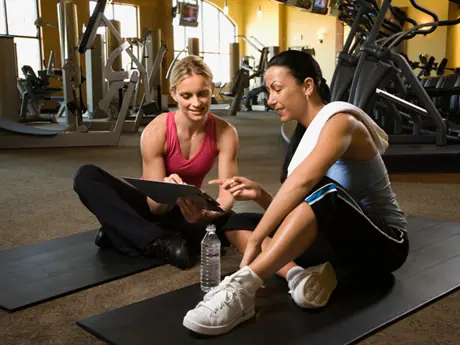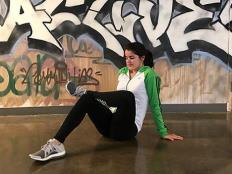
It's not surprising these days to see women dominating inside the sports arena, but the number of women rising in the ranks behind the scenes is also growing.
More female trainers than ever are working with the country's top athletes—from WNBA players to collegiate quarterbacks—and it's their knowledge of physiology, injury prevention and rehabilitation that keeps the athletes performing at their peak.
No matter what your fitness level, these athletic trainers' workout tips will make you a star performer.
More: 3 Exercise Tests to Asses Fitness
TRAINER:
Ariko Iso, 41, Head football athletic trainer at Oregon State University
Iso became the first female athletic trainer in the NFL when she was hired by the Pittsburgh Steelers in 2002.
Train Smarter
If you want an all-in-one training tool, Iso says the TRX Suspension System is worth the investment. She likes the portability and how it makes any body-weight move more challenging.
"The fact that it's suspended means you have to use your core to stabilize," she says. "You work more than one muscle during any exercise, and when you can do that, you save time." ($200, trxtraining.com)
Don't know where to start? Try this Total-Body Sculpting TRX Workout.
Back It Up
People know to train their abs, but many don't realize how important it is to strengthen their entire back, says Iso.
Add a few simple exercises in the quad ped position—on hands and knees—to your weekly routine. Try this: Slowly raise your opposite arm and leg until your body forms a straight line from fingertips to heel. Pause, then return to start. Do three sets of 15 to 20 reps on each side.
More: 3 Core Workouts to Keep Your Back Strong
TRAINER:
Mary Kirkland, 48, Athletic training supervisor for InoMedic Health Applications at NASA (Kennedy Space Center)
As the first athletic trainer ever hired by NASA, Kirkland keeps astronauts and employees healthy and fit.
Tame the InsanityPopular DVD series like P90X and Insanity are great workouts, but they're not for everyone, says Kirkland, who notices many people do too much too soon—despite the video's telling them to pace themselves.
"An overuse injury can take three, sometimes six weeks to really start hitting you, so you could be doing damage from the start without realizing it," she says.
Try the program in 15-minute increments or add just one or two new exercises and see how your body responds before doing the whole thing.
More: 6 P90X Moves to Tone You Up
Sit BackIf your ab routine typically consists of things like V-sits and situps, it's time to rethink your approach.
"You have five lumbar vertebrae, and each one gives you about seven to nine degrees of motion, for a total of 45 degrees," says Kirkland.
That means to truly work your core, you need to stay between zero degrees—like a plank—and 45 degrees—like a crunch.
"From 45 degrees to a full situp, you're engaging your hip flexors, which attach directly to your lumbar spine. Too many reps will not only make your hip muscles sore, but your lower back will start to hurt too."
You can target every muscle in your core sans situps with this Killer Abs Workout from Jillian Michaels.
- 1
- of
- 2
Get ACTIVE on the Go


Couch to 5K®
The best way to get new runners off the couch and across the finish line of their first 5K.
Available for iOS | Android






Discuss This Article